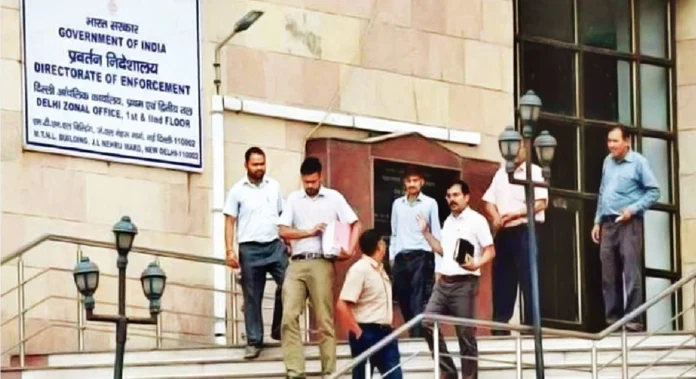By Sanjay Raman Sinha
The much-feared arrest powers of the Enforcement Directorate (ED) were thrust back into the spotlight recently when, on the agency’s Foundation Day, Additional Solicitor General (ASG) SV Raju issued a striking piece of advice. Addressing ED officers, he urged restraint—advocating for delayed arrests in money laundering cases and emphasizing the need for thorough evidence gathering before taking anyone into custody.
Raju’s comments were not only a rare call for procedural caution, but also a subtle critique of the ED’s current practice of swift arrests with questionable legal grounding. “Under PMLA, grounds of arrest must be furnished before taking someone into custody,” he reminded. Yet, just days later, standing before the Delhi High Court, the same ASG called the trial court’s grant of regular bail to Aam Aadmi Party chief Arvind Kejriwal “erroneous, perverse, bad in law”. The ED, he said, would seek to have the bail order overturned—even though it was not immediately pressing for its cancellation.
This contradiction encapsulates the larger tension at the heart of the ED’s functioning: between the agency’s unchecked arrest powers and the judiciary’s effort to uphold the constitutional rights of the accused.
THE ARREST-ACQUITTAL IMBALANCE
The numbers tell a telling tale. In the last decade, the ED registered 5,297 money laundering cases. Only 43 trials have concluded—just 0.81 percent of all cases. Of these, 40 led to convictions. While the conviction rate of concluded cases appears impressive at 93 percent, the minuscule number of completed trials raises fundamental concerns about the ED’s prosecutorial depth and investigative rigour.
The Supreme Court itself has increasingly voiced its disapproval. While granting bail to former Delhi Deputy Chief Minister Manish Sisodia, the Court observed: “Detention or jail before being pronounced guilty of an offence should not become punishment without trial.” Despite such caution from the highest court, arrest remains a first resort for the ED, not the last.
POLITICAL LEVERAGE, LEGAL LOOPHOLES
The Prevention of Money Laundering Act (PMLA), especially after the Vijay Madanlal Choudhary vs Union of India (2022) ruling, provides the ED sweeping powers. The Supreme Court in that case upheld the legality of the Act and ruled that ED inquiries are distinct from standard criminal investigations, effectively bypassing procedural safeguards provided under the Code of Criminal Procedure (CrPC). Most controversially, the ED was relieved of the obligation to furnish the Enforcement Case Information Report (ECIR) to the accused—raising serious concerns about transparency and due process.
The Court’s validation came via a bench led by Justice AM Khanwilkar, whose judgment aligned with the centre’s position. The fact that several of the PMLA amendments had been passed as part of a Money Bill, a mechanism allowing limited debate, added to the controversy. Congress leader Karti Chidambaram filed a review petition, questioning whether such significant legal changes could be made using a Money Bill route at all.
ARREST FIRST, EVIDENCE LATER?
Under Section 19 of PMLA, an ED officer may arrest a person if there is “reason to believe,” based on material in possession, that the individual is guilty. The rationale was to prevent arbitrary arrests—but in practice, it has often had the opposite effect. Arrests, critics say, are increasingly made in haste, under political pressure, with inadequate or poorly prepared charge sheets.
Recently, while hearing a case involving alleged liquor policy corruption in Chhattisgarh during the Congress-led government, the Supreme Court noted a disturbing pattern: “The ED is making allegations without sufficient proof.”
This pattern is particularly concerning in the light of the PMLA’s reversal of the presumption of innocence. The burden lies on the accused to prove they are not guilty—a heavy task, especially when arrests are based on flimsy grounds and trials move at a glacial pace.
A JUDICIARY AWAKENS
The judiciary, especially the Supreme Court, appears to be slowly pushing back—granting bail in high-profile PMLA cases involving politicians like Hemant Soren, K Kavitha, and Prem Prakash. The growing emphasis on bail as the norm, not the exception, signals a shift in judicial thinking.
Yet for real reform, legislative changes must accompany judicial scrutiny. The ED’s current powers remain largely intact, and without political will to rein in the agency, procedural abuse may persist. The key question remains: Will the ED reform itself—or will it continue to serve as a political tool cloaked in legality?


